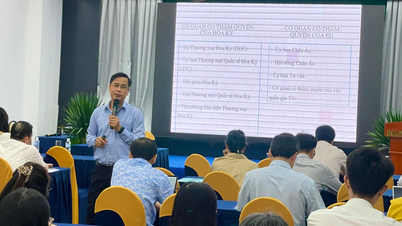To boost consumer spending, Chinese e-commerce platforms have extended their discount campaigns during this year’s Singles’ Day shopping festival. JD.com started the program three days earlier than last year and lasted more than a month. Alibaba also ran the promotion for about a month, until November 14. However, in addition to positive sales results, retailers are also facing notable changes in consumer shopping trends.
The latest statistics show that the extended discount programs are still having a positive impact. By the end of October, the total sales of the discount period had exceeded 1,000 billion yuan (about 140 billion USD). According to the latest report from JD.com, its sales during Singles' Day set a record, with the number of customers increasing by 40% compared to the same period last year, and the order volume increasing by nearly 60%.
However, many businesses said that this year's Singles' Day sales were "not bad", but "consumer price sensitivity has clearly increased". What is happening is that the discount programs that last throughout the year are diluting demand, making many consumers no longer too interested.
"When I was a student, Singles' Day was a time to stock up on food or digital products. Back then, the discounts were more substantial and I used to buy a lot of products. Now, the prices on Singles' Day are not much different from normal days and I don't feel like there are many attractive discounts. So this year, I bought very little," said Xiao.
"People don't want to spend. Or you could say they've been less affected by the stimulus measures of e-commerce companies through discount wars, or shopping events. Previously, these stimulus measures worked, people looked forward to Singles' Day, but now every day is Singles' Day," Ms. Tang Bei shared.

Chinese consumers are increasingly cautious, less fond of discounts, and shifting to prioritizing value and experience when shopping.
According to research firm Wind, China's consumer confidence index in September reached 89.6 - the highest since April 2023, but still significantly lower than the threshold of 100 - the level that separates the level of optimism or pessimism of consumers. This cautious sentiment has led consumers to mainly focus on necessities and affordable products, avoiding expensive items.
Another notable change is that demand for services has increased compared to demand for physical products this year, according to a recent survey conducted by JD.com with over 10,000 consumers.
Ms. Liu Qi - Researcher, JD.com Institute of Industry and Consumer Development said: "The survey results show that the proportion of service consumption in people's spending has been continuously increasing since the beginning of this year. According to consumer feedback, the most popular types of service consumption include quality food delivery, medical services, home repair, travel and home cleaning services."
With China's economy facing many challenges and consumers accustomed to continuous discount campaigns, stimulating shopping demand with discount programs alone is expected to become increasingly difficult. Experts recommend that companies focus on new approaches, such as emphasizing "experiential value" to maintain customer attraction.
Source: https://vtv.vn/nhung-thay-doi-trong-xu-huong-tieu-dung-tai-trung-quoc-100251112173900041.htm



![[Photo] Prime Minister Pham Minh Chinh attends a conference to review one year of deploying forces to participate in protecting security and order at the grassroots level.](https://vphoto.vietnam.vn/thumb/1200x675/vietnam/resource/IMAGE/2025/11/12/1762957553775_dsc-2379-jpg.webp)
![[Photo] Highways passing through Dong Nai](https://vphoto.vietnam.vn/thumb/1200x675/vietnam/resource/IMAGE/2025/11/12/1762940149627_ndo_br_1-resize-5756-jpg.webp)





































































































![Dong Nai OCOP transition: [Article 3] Linking tourism with OCOP product consumption](https://vphoto.vietnam.vn/thumb/402x226/vietnam/resource/IMAGE/2025/11/10/1762739199309_1324-2740-7_n-162543_981.jpeg)







Comment (0)